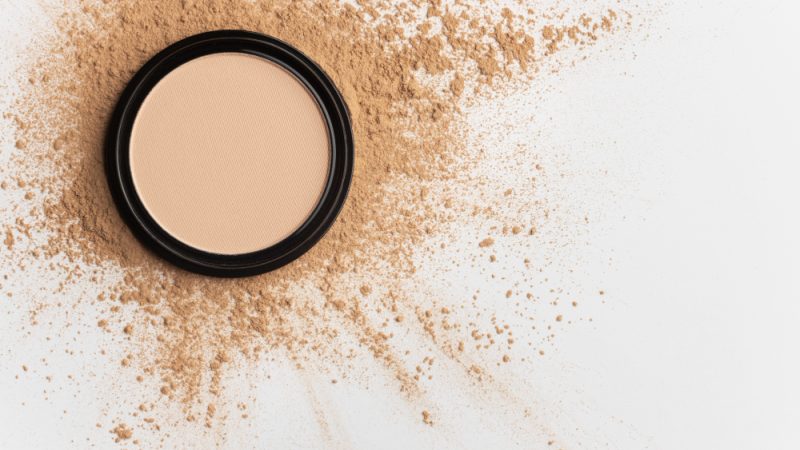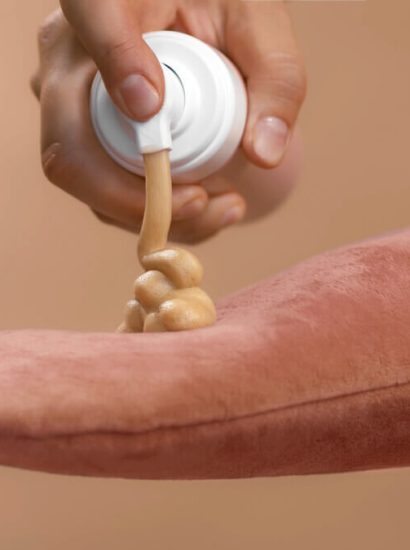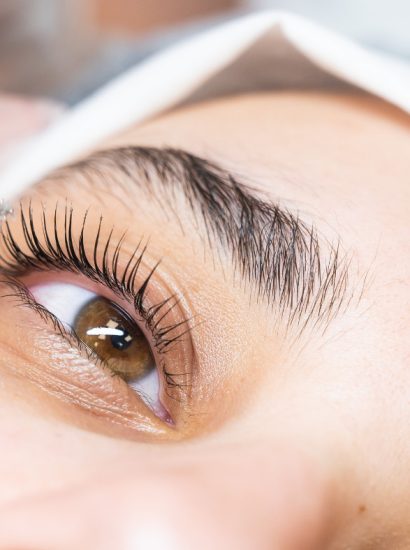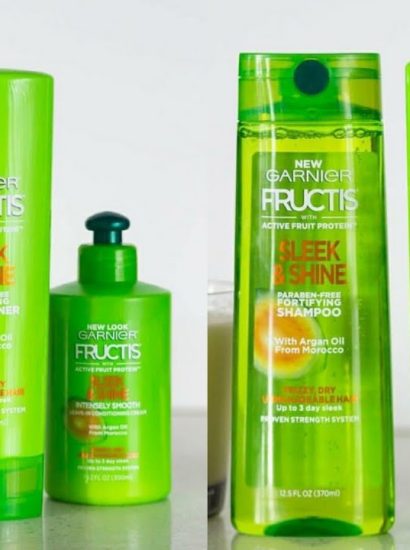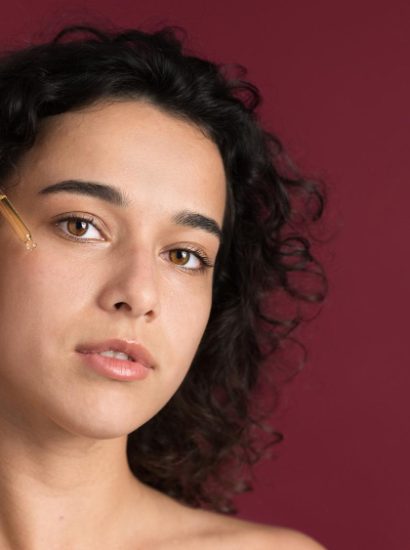If you’ve ever wondered how makeup artists achieve that smooth, crease-free, and long-lasting finish, the secret often lies in one essential product — setting powder. This makeup staple has been a trusted beauty tool for decades, helping to keep foundation and concealer in place while minimizing shine and enhancing skin texture.
But what exactly is setting powder, and how do you use it correctly to avoid a cakey or heavy look? In this comprehensive guide, we’ll break down everything you need to know — from the different types of setting powders to expert application techniques and product recommendations to achieve that flawless, photo-ready finish.
What Is Setting Powder?
Setting powder is a finely milled powder designed to lock in your makeup, reduce shine, and give your skin a smooth, matte, or soft-focus finish.
It’s typically applied after foundation and concealer to “set” the products, preventing them from moving or creasing throughout the day.
Setting powders can be
- Translucent: Colorless and suitable for most skin tones.
- Tinted: With subtle pigmentation to match or enhance your complexion.
In short, setting powder acts like a protective layer over your makeup — keeping it intact, oil-free, and photo-perfect.
The Difference Between Setting Powder and Finishing Powder
Many people confuse setting powder with finishing powder, but they serve different purposes.
- Setting powder is used to set liquid and cream makeup products (like foundation and concealer) in place.
- Finishing powder is used at the very end of your makeup routine to blur imperfections and add a soft, airbrushed finish.
Think of it this way:
- Setting powder = functional (keeps makeup in place).
- Finishing powder = aesthetic (enhances the final look).
While some products combine both features, knowing the difference helps you choose the right powder for your skin type and makeup goals.
Benefits of Using Setting Powder
Using setting powder properly can completely transform your makeup look. Here are the main benefits:
- Locks makeup in place: Prevents foundation and concealer from slipping or creasing.
- Reduces shine: Controls oil, especially in the T-zone (forehead, nose, chin).
- Smooths texture: Minimizes the appearance of pores and fine lines.
- Extends wear time: Keeps makeup looking fresh for hours, even in heat or humidity.
- Prevents smudging: Especially useful for long events or photoshoots.
Even if you have dry skin, a light dusting of setting powder can help balance your complexion without making it look dull.
Types of Setting Powders
Not all setting powders are the same — and understanding their types helps you choose the one that works best for your skin.
a. Loose Setting Powder
This is the most common type and often used by makeup artists. Loose powders are finely milled and perfect for baking (a technique where powder is left on the skin for several minutes before dusting off).
- Best for: Oily or combination skin
- Finish: Matte or soft-focus
- Pros: Lightweight, long-lasting
- Cons: Can get messy if overapplied
b. Pressed Setting Powder
Pressed powders are compact versions of setting powder, ideal for on-the-go touch-ups.
- Best for: Normal to dry skin
- Finish: Natural or satin
- Pros: Easy to carry, less messy
- Cons: Can appear cakey if layered excessively
c. Translucent vs. Tinted Powders
- Translucent: Suitable for most skin tones; doesn’t alter foundation color.
- Tinted: Provides light coverage and helps even out skin tone.
d. Mineral Setting Powders
Made with natural ingredients like silica or mica, these powders are great for sensitive skin and offer a breathable, non-comedogenic finish.
How to Choose the Right Setting Powder for Your Skin Type
The key to achieving a flawless finish lies in choosing the right setting powder for your skin type.
For Oily Skin:
Opt for matte, oil-absorbing powders with ingredients like silica or clay.
Try: Laura Mercier Translucent Loose Setting Powder
For Dry Skin:
Choose hydrating or satin-finish powders with light-reflecting minerals.
Try: Hourglass Veil Translucent Setting Powder
For Combination Skin:
Use a translucent formula and apply it selectively — mattify the T-zone, but go light on the cheeks.
For Sensitive Skin:
Look for fragrance-free, talc-free powders made with clean or mineral-based ingredients.
Step-by-Step Guide: How to Apply Setting Powder
Applying setting powder correctly is essential for a natural, crease-free finish. Follow these steps for best results:
Step 1: Prep Your Base
After applying foundation and concealer, allow them to set for a minute or two. This ensures your powder won’t cling to wet spots.
Step 2: Choose the Right Tool
You can apply setting powder with:
- A fluffy powder brush for light coverage.
- A damp makeup sponge for targeted precision.
- A powder puff for the baking technique.
Step 3: Pick Up a Small Amount
Tap off any excess product before applying. Too much powder can create a heavy or chalky look.
Step 4: Apply Strategically
Focus on areas prone to oil and creasing — usually the forehead, nose, chin, and under the eyes.
Step 5: Set and Forget
For extra longevity, let a thin layer of powder “bake” under your eyes or along the jawline for 3–5 minutes, then dust off the excess with a soft brush.
Common Mistakes to Avoid When Using Setting Powder
Even a great product can backfire if used incorrectly. Here are the most common mistakes:
- Using too much powder: Creates a cakey or dry texture.
- Applying on wet foundation: Causes patchiness.
- Ignoring your skin type: The wrong finish can highlight dryness or oil.
- Skipping prep: Always start with moisturized skin for smooth results.
- Using the wrong brush: Dense brushes deposit too much powder; use fluffy ones for even blending.
The goal is a light, natural layer that enhances — not hides — your complexion.
Top Setting Powders of 2025
Here are some of the best setting powders of 2025 loved by makeup artists and beauty enthusiasts alike:
- Laura Mercier Translucent Loose Setting Powder: The gold standard for a matte, flawless finish.
- Hourglass Veil Translucent Powder: Perfect for dry or mature skin; adds a radiant glow.
- Fenty Beauty Pro Filt’r Setting Powder: Long-lasting with multiple shades for all skin tones.
- RCMA No-Color Powder: Lightweight and invisible on camera — ideal for professional use.
- Maybelline Fit Me Loose Finishing Powder: A budget-friendly favorite that blurs pores beautifully.
These products deliver a professional-quality finish whether you’re doing everyday makeup or a glam look.
Expert Tips for a Flawless Finish
To take your makeup from good to stunning, follow these expert tips:
- Hydrate before makeup: Powder clings better to smooth, moisturized skin.
- Set immediately after foundation: Prevents creasing, especially under the eyes.
- Use a damp sponge: Press powder gently into the skin for a skin-like texture.
- Blend thoroughly: Always sweep off excess powder to avoid buildup.
- Mix powders: Combine matte and luminous formulas for a balanced glow.
These techniques help you achieve a photo-ready finish without heaviness or flashback.
Setting Powder vs. Setting Spray
Both setting powder and setting spray are designed to extend makeup wear, but they work differently:
- Setting Powder: Controls oil, mattifies, and locks makeup in place.
- Setting Spray: Hydrates, reduces powderiness, and fuses makeup layers together.
For best results, use both — apply powder first to set, then mist with a setting spray to blend and refresh your makeup. This combo delivers lasting power with a natural finish.
Conclusion
Setting powder is one of the most powerful tools in any makeup routine — yet often overlooked or misunderstood. Whether you’re aiming for a matte, dewy, or airbrushed finish, the right powder can transform your look by locking in foundation, controlling shine, and smoothing texture.
By choosing the right formula for your skin type and learning proper application techniques, you can achieve a flawless, long-lasting makeup finish worthy of any professional makeup artist.
So next time you’re finishing your makeup, remember: a little setting powder goes a long way toward making your look last all day — and all night.
FAQs
1. What is the purpose of setting powder?
Setting powder helps lock in liquid or cream makeup, reduces shine, and creates a smooth, long-lasting finish that prevents creasing or smudging.
2. Can I use setting powder every day?
Yes! Just apply a light dusting to avoid buildup. It’s great for daily wear, especially if you have oily or combination skin.
3. What’s the difference between loose and pressed powder?
Loose powder offers a more natural, lightweight finish, while pressed powder is convenient for quick touch-ups on the go.
4. Can I use setting powder without foundation?
Absolutely. A light layer of setting powder can mattify your skin and reduce shine even when you’re going makeup-free.
5. How do I avoid a cakey look with setting powder?
Use minimal product, apply with a fluffy brush, and always tap off the excess before applying to your face. A setting spray afterward also helps blend everything seamlessly.
Also read: Orange and Brown Hair Color Ideas: Stunning Warm Shades to Try This Season

